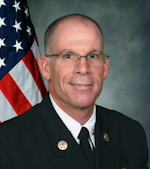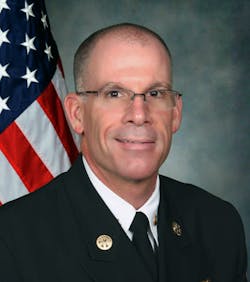As Firehouse Sees It: The New Normal
On Aug. 20, 1910, faced with a raging fire that was said to be “impossible to fight,” Ed Pulaski single-handedly fought back the encroaching wildfire at the mouth of an abandoned prospect mine where he had directed his crew of 45 men to seek refuge. When the fire finally passed by, and the men emerged from the mine, Pulaski was unconscious, yet alive, and all but five of his men had survived the remarkable firestorm. The fire, which burned for a mere two days, consumed nearly 3 million acres and claimed 87 lives, 78 of whom were firefighters.
Fast forward nearly 40 years to Aug. 5, 1949, when a young 33-year-old Hotshot foreman charged with leading a crew of inexperienced smokejumpers was faced with a fast-approaching wildfire that imposed a life-or-death situation for him and his crew. With nowhere else to turn, and a likely impossible climb to the ridge above of him, he did the unthinkable—he lit a fire and laid down in the hot ashes to allow the main body of fire to pass over him. In the aftermath, Wagner (Wag) Dodge and two of his men survived while 13 others (12 of whom were smokejumpers) died in the fire.
The annals of wildfire history are filled with these stories of remarkable acts of courage, survival and unconscionable fate. As I write this, we are preparing to mark the three-year anniversary of the Yarnell Hill Fire, which claimed the lives of 19 firefighters with the Prescott Fire Department’s interagency Granite Mountain Hotshots crew on June 30, 2013. At the same time, our northern neighbors in Fort McMurray, Canada, are entrenched in a battle with a wildfire described by some to be equal to the size of Hong Kong and almost 25 percent bigger than New York City.
The fire, which has raged for days, is expected to become the costliest disaster in Canadian history. To date, it has displaced an entire city of more than 88,000 people and destroyed more than 2,400 structures. Given the remarkably dry conditions throughout the region and the forecasted weather patterns, some have described this as “the new normal” for Canada’s future wildfire season.
Each year, as winter turns to spring and spring turns to summer, the wildlands throughout our nation ignite and threaten the lives of hundreds, if not thousands, while causing indescribable devastation to various regions throughout our country. Predictably, our wildland resources will be deployed into the most extreme conditions imaginable, they will be depleted to a dangerously low level that imposes additional risk to firefighters and civilians alike, and they will be worked to the brink of exhaustion.
The question is, is this our “new normal”? If so, why? Why is it that these historically devastating, highly predictable and in many cases preventable events continue to be managed and addressed in such a reactive manner, a manner that imposes incalculable risk to civilians and firefighters alike?
Not unlike the structural world, the barriers of politics and human behavior also encumber our nation’s wildland firefighters. Defensible space and land use management are proactive measures that have long been developed and proposed as workable solutions to establish fire resilience within communities, yet from coast to coast, our citizens continue to resist.
When the final ashes cool and the last hose is racked in Fort McMurray, the costs are expected to exceed more than $10 billion, the lives of thousands will be affected, and the emotional trauma will be unending. It is unknown whether this tragedy will become yet another entry in their annals of history or whether it will serve as their tipping point of change.
Prevention may to some be nothing more than a buzzword, and it may not be met with a great deal of enthusiasm within society, but we cannot bow down and accept the predictable loss of life and property as our new normal. If our mission is to save lives and protect property, and our character and tradition is to never forget the memories of those who have been lost, we MUST go beyond the barriers of politics and work for a more acceptable “normal,” one that represents and reflects the relentless tenacity of America’s Bravest.

Timothy E. Sendelbach | Editor-in-Chief
Timothy E. Sendelbach is a 30-year student and educator of the fire and emergency services, and former editor-in-chief for Firehouse. He has served as an assistant fire chief with the North Las Vegas, NV, Fire Department, as the chief of training for Savannah (GA) Fire & Emergency Services and as assistant fire chief for Missouri City, TX, Fire & Rescue Services. He is a credentialed Chief Fire Officer and Chief Training Officer and has earned a master’s degree in leadership from Bellevue University, bachelor’s degrees in fire administration and arson and an associate’s degree in emergency medical care from Eastern Kentucky University.






